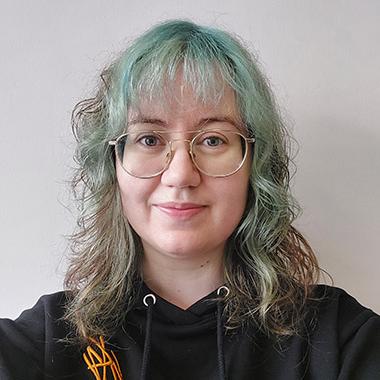
Dr Katerina Rodiouchkina
Biography
Katerina is now a post-doctoral researcher back home, at Luleå University of Technology in Northern Sweden working on Uranium isotopes
She completed her joint PhD between Ghent University and VUB in May 2023 working on Sulfur isotope analyses using MC-ICP-MS.
Education
MSc in Analytical Chemistry at Uppsala University, Sweden, 2018
BSc in Chemistry at Uppsala University, Sweden, 2016
Project title
Evaluation of sulfur isotope measurements in biological and geological samples using MC-ICP-MS
Description
The EOS project ET-Home focuses first on the evolution of the habitability of Mars and the Earth, and second, on the traceability of life in specific environments. Finding unambiguous traces of life answers the question of habitability, although the opposite does not necessarily imply that the environment is not habitable. This project addresses questions that can only be solved using a synergetic approach through extensive collaboration and inter-disciplinary exchanges. The work package of the EOS project on which I am included in is dedicated to the traceability of life using various tools, and to their application to different case studies to evaluate their robustness. Identifying biosignatures that indicate if life was present in a particular sample is of crucial importance. Biosignatures encompass morphological (microfossils and biosedimentary structures such as stromatolites or microbially induced sedimentary structures or chemical (elemental, molecular or isotopic) traces of life. In addition, coupling the biological traces of life and the geochemical compositions of the host rocks reconstructs the paleoenvironments that harbored life. Variations in the isotopic composition of elements with two or more isotopes occur in nature due to mass-dependent and mass-independent fractionation effects. The evaluation of the extent and nature of fractionation effects gathers information on a vast variety of questions. Today, new MC-ICP-MS techniques measure non-traditional isotope systems with sufficiently high precision to unravel and quantify minute variations in the isotopic composition of the target elements. Indirectly tracing the presence of life with biosignatures is always a complicated task because abiotic processes can superimpose their effect on the biological elemental and isotopic fractionation.
My main focus is sulfur isotope ratio signatures as sulfur is an essential component of life and also an important constituent in soil as well as having a significant influence on the climate in form of aerosol sulfur in the stratosphere. Sulfur isotope ratio fractionations can therefore be used to trace redox reactions throughout the sulfur cycle, including microbial activity, provenance and climate. As such I am characterizing both geological and biological materials for their recorded S isotope signatures to be used in a variety of different purposes, with work including hair and nails, microstructures in bivales and samples related to the Chicxulub impact crater.
Supervisors
Prof. Frank Vanhaecke (UGent)
Prof. Steven Goderis (VUB)
